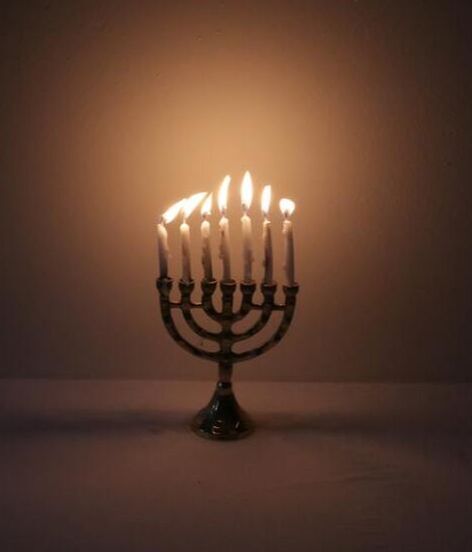 The 400 years between the Old and New Testaments are known as the "silent years." It was during these years that Hanukkah took place. The Jews called the Greek-Syrian General who led the forces against them "Antiochus the Madman." His belief was that he was one of the Greek gods who had come to earth. He took the name Epiphanes, which means "God manifest" and expected the Jews to worship him. In the town named Modi’in, just outside of Jerusalem, a representative of Antiochus came to demand that the Jews bow down and worship a statute of Antiochus. The priestly family called the Maccabees was unwilling to compromise their faith and began a campaign of guerrilla warfare against the Greek-Syrian army.
A miracle was in the working! God honored the Maccabees and their small band of fighters for refusing to assimilate into the world around them by honoring the Word of God . They understood they would be put to death if they lost their battle. But they were “steadfast and immovable” (1 Corinthians 15:58) in their belief. They were “rooted and grounded” (Ephesians 3:17) in the Lord and would not be moved. On the 24th of Kislev on the Hebrew calendar, in the year 165 B.C., the three-year campaign waged by the Maccabees against their persecutors ended in victory. Antiochus the IV failed in his attempt to "Hellenize" (absorb into Greek culture) the Jews. Because the Temple had been defiled by the Greek-Syrian soldiers, it had to be cleansed and rededicated. The Maccabees removed all the stones from the altar because it had been defiled by the sacrifice of a pig upon it. A new altar was built, and they set about to relight the seven-branched candelabra known as the Menorah. Once lit, the Jews realized that there was not enough sacred oil to keep the flame of the candles burning for more than one day. It took eight days to prepare more holy oil. The miracle of Hanukkah is that the Menorah oil burned for eight days without any oil being added to the original supply. Today Hanukkah is celebrated for eight days in honor of the miraculous light that shown brightly in the Temple. The Menorah that is used today has eight branches to signify the eight days the oil burned in the Temple. There is a ninth branch in the center for the Shammas or Servant candle. It sits higher than the other candles and is used to light all the others. Christians may recognize that this candle symbolizes Jesus, "The Light of the World." (John 9:5) He is the Light that shines to show the way for a new beginning for all who come to Him. Those of us who have been "lit" by Jesus have a responsibility to keep our "lights shining before others, that they may see your good deeds and glorify your Father in heaven." (Matthew 5:16) Today we are faced with a society of people with immoral and alternative lifestyles that would like to snuff out our lights. Their scheme is to make us forget who we are as defined by God. They entice us to compromise our faith and encourage us to assimilate into their dark life patterns. We can see the erosion of a Biblical lifestyle. But, we can make a difference because we are the light of the world! (Matthew 5:14) Let the light of the Hanukkah candles remind us of our call to shine the light of Yeshua in the darkness. We have been set ablaze through His love, and the Holy Spirit provides us with an eternal supply of oil. Burn, dear ones! Burn! |
Joan E. MathiasCategories
All
Archives
July 2024
|
 RSS Feed
RSS Feed